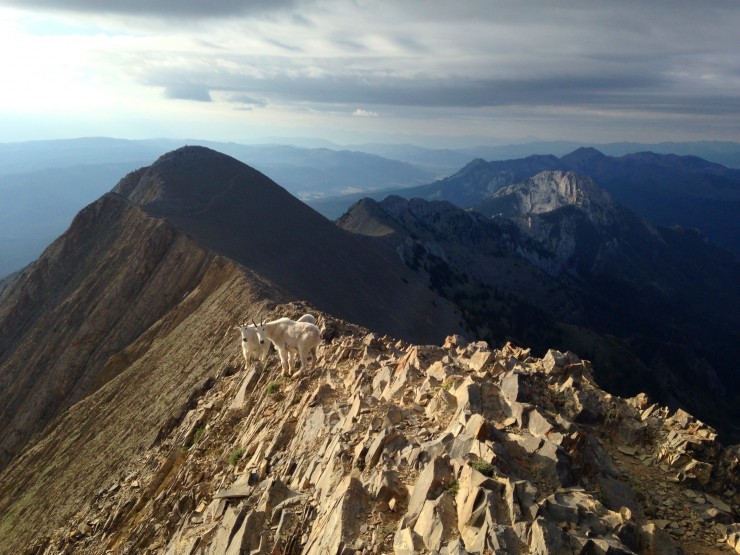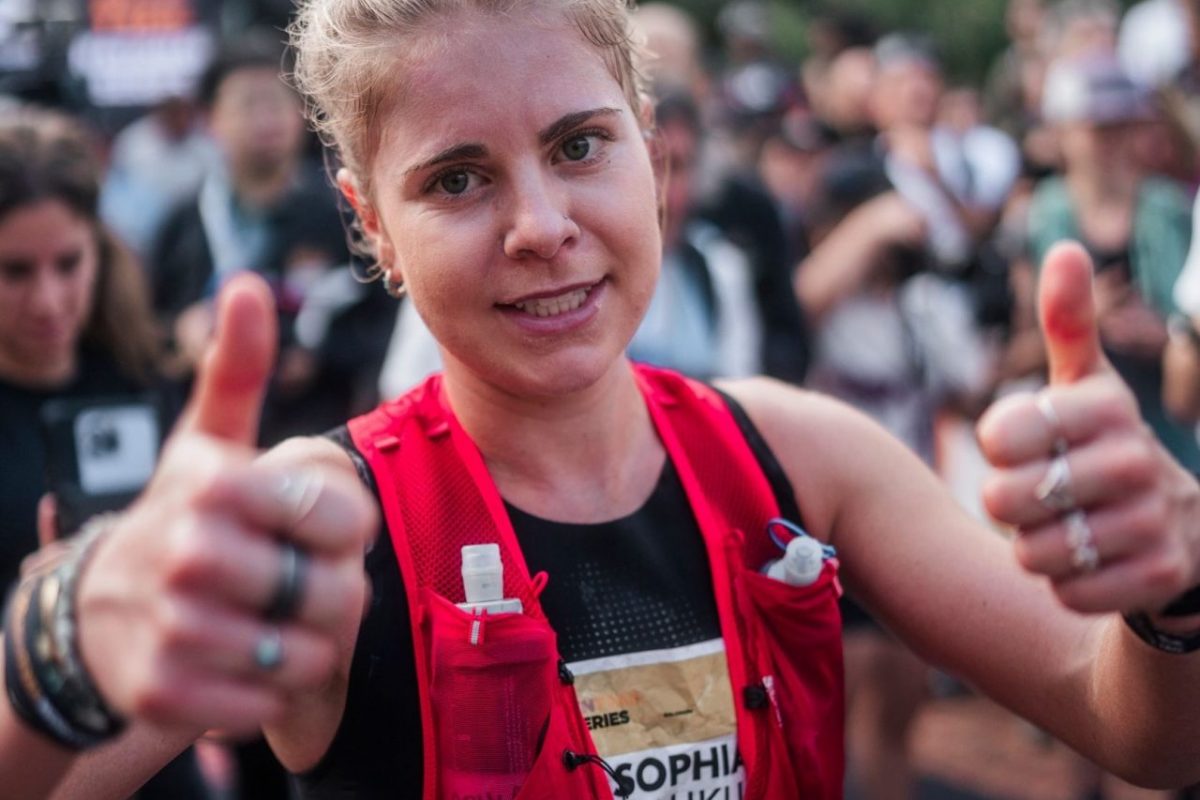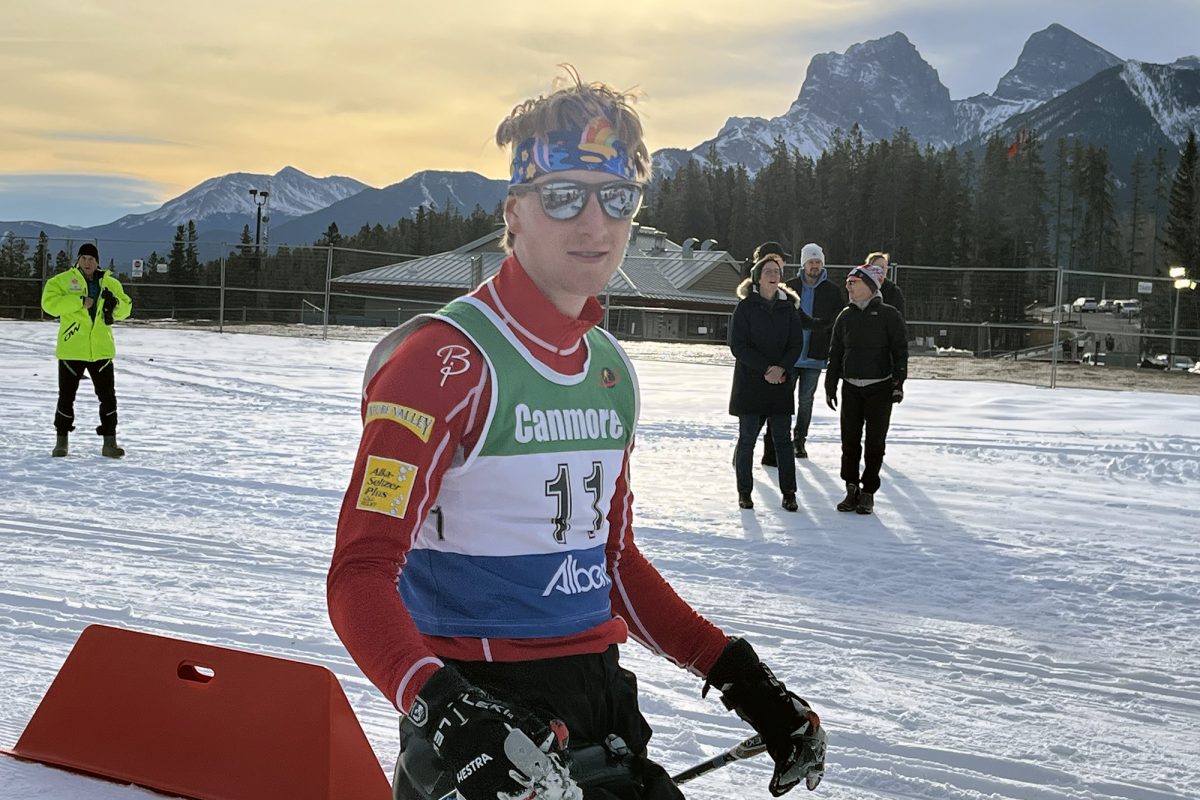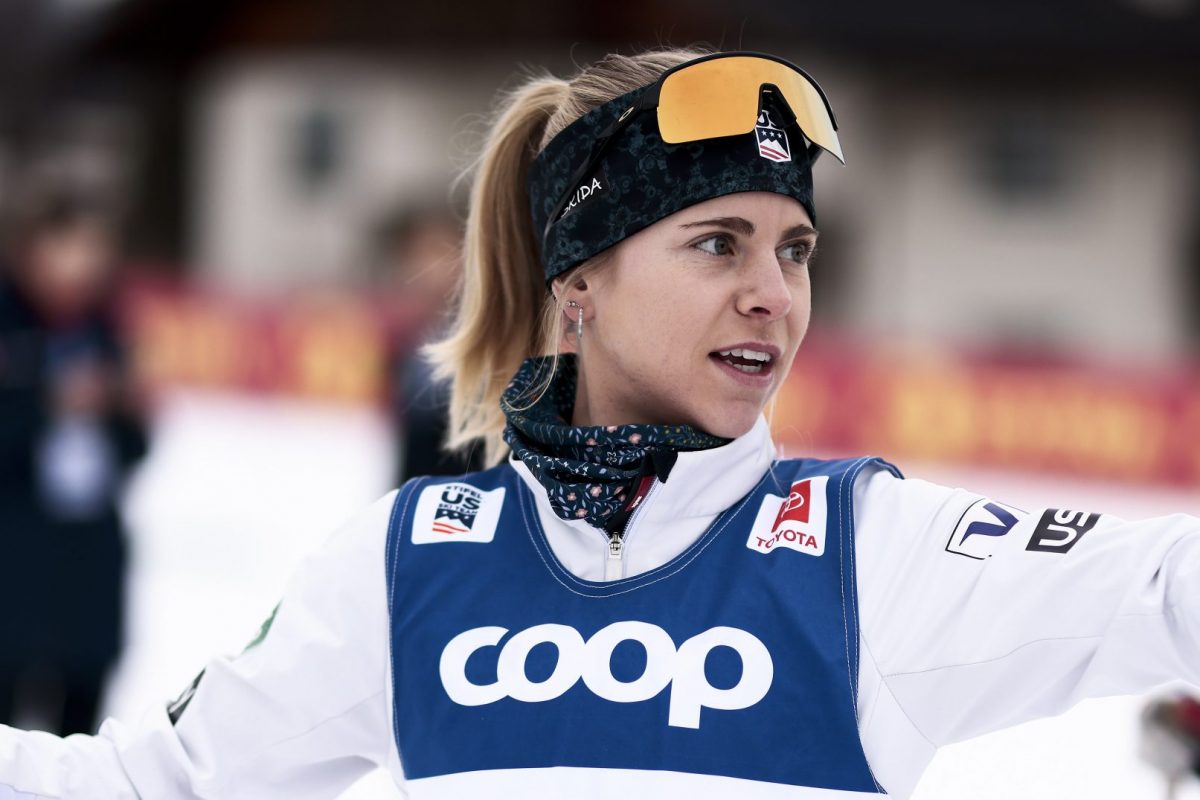
The Bridger Ridge Run has been called one of the most rugged running races in the U.S. It was named one of America’s top trail running races by Runner’s World, claiming the title of “Most Raw Exposure” in 2012. In 2013 Outside Magazine included the race as one of its top 10 trail runs in its bucket list.
It’s no secret that the Bozeman, Mont. race is a challenge. The course begins at the base of Sacajawea Peak and continues along the ridge of the Bridger Range for 20 miles until runners descend and finish at the “College M” that overlooks town. Over the course of the run, racers climb 6,800 ft. and face 9,500 ft. of steep decent. For much of the course, the trail is barely distinguishable and racers must maneuver their way through the sharp and unforgiving rocks.
The only thing more difficult than finishing the race is entering. The run allows roughly 300 competitors to register each year. Guaranteed spots are reserved for those who have either previously won the race or have participated at least 10 times in the past. Everyone else must be chosen by lottery.
The race was founded by Bozeman local Ed Anacker in 1985 in an effort to bring attention to the acclaimed trail running in the Montana town. Since its inaugural race, the Ridge Run has become a Bozeman staple and draws runners from across the country.
The Bridger Ridge Run is an attraction for the many nordic skiers in the area as well, and many former and current ski racers from the nordic community participate every year.

This past May, I made the fateful decision to enter the Bridger Ridge Run. Having ended my ski racing career several years before, I missed working towards a specific athletic goal and the Ridge Run sounded like the perfect race to get me on a regular training plan over the summer.
When I was chosen as one of the entrants in June, however, the training did not follow. Due to an extremely painful IT band related knee issue, I was stuck biking most of the summer and a month before the race, it seemed as if I wouldn’t be lining up for the race on August 9.
However, after several weeks of physical therapy and a few practice runs just weeks before the race I deemed myself “ready” for the to run. At this point my main goal was only to finish.
Come race morning participants wound their way up Bridger Canyon to the start of the race. With the sun just beginning to rise, moods of the racers and their chauffeurs were incredibly high considering the early start.
At 7:00 am the first wave of racers, including University of Vermont’s Cole Morgan and 2002 Olympic biathlete and former Montana State University assistant nordic coach Dan Campbell, took off.
As part of the second wave, I began five minutes later.
From the very start racers face an unforgiving climb. As we made our way from the base of Sacajawea Peak to it’s summit, which sits at 9,839 feet, I instantly regretted starting near the front of the second wave. However, the adrenaline and cheering crowds made the pace manageable.
Halfway up the peak we met more encouragement in the form of a lone bagpiper. Every year he and his pipes make the journey to provide racers a distraction with his belting tunes that echo on the mountain cliffs.
From the top of Sacajawea, the bagpiper’s tune was no longer audible but a new sight had caught our attention. The remaining 18 miles of the course appeared before us, both stunning and daunting at the same time.
Heading down from the summit into our inevitable “pain cave,” we faced multiple descents where I felt a fall was imminent. Fortunately I never tumbled off the trail, but every so often I’d hear someone go down around me or pass a fellow racer with bloodied knees and elbows.

As we made our way along the rolling Bridger Range the trail became less apparent, the rocks more jagged, and fatigue started to set in. Fortunately, I was stocked with Shot Bloks and HoneyStinger waffles that kept me well fed and energized. Former University of Denver skier and past participant of the Ridge Run, Kate Dolan had advised me to eat every 20 minutes, so I set the timer on my watch and did my best to pop in a sugary Blok every time the alarm went off. After two-and-a-half hours had passed I was thankful for her advice.
Passing the halfway point at the top of the local ski area, Bridger Bowl, my legs were starting to feel a bit shaky and my energy started to wane. There were two major climbs and a steep, unforgiving 5-mile decent between me and the finish.
By the time I reached the final aid station at the top of Baldy Peak, volunteers, friends, and other spectators gave me words of encouragement. While I wanted to believe their statements that the race was almost over and that it was an “easy” downhill from there, I knew my legs were shot and that the nearly vertical decent for the next five miles was going to be painful.
Even armed with my skepticism of the spectators’ encouragement, I was not prepared for the difficultly of the decent. The mixture of dust, loose rocks, and jello-like legs kept me at a turtle’s pace. Each step made it feel as if knives were repeatedly stabbing my legs. At this point, the lack of preparation was starting to haunt me.
Finally I reached the finish to find a cheering crowd. With the last bit of energy I could muster, I crossed the finish line, a grimace-like smile plastered to my face, with a time of 5:04:49.
I later found that Peder Andersen had garnered the best time of the day, finishing the race with a time 3:28:41. Campbell earned sixth, with a time of 3:56:02 and UVM’s Morgan finished eighth, with a time of 3:57:10.
For the women, ultra-marathon veteran Nikki Kimball, who earned multiple NCAA All-American distinctions during her time at Williams College, was the top finisher with a time of 4:02:47. Bridger Ski Foundation coach, Emily Allison finished fifth with a time of 4:29:08. Former and current Bates College skiers, Samantha Forrest and Maddy Ekey finished with times of 5:21:55 and 6:26:51.
After ample time spent relaxing in the finish line hot tubs filled with ice, I already began to forget the pain I had experienced only minutes before. I even began talking with other finishers about training for next year’s race.
That’s the magic of endurance sports: one minute it feels as if mental and physical collapse is imminent; the next you’re ready to get out and conquer the next big adventure.
Lander Karath
Lander Karath is FasterSkier's Associate Editor from Bozeman, Montana and a Bridger Ski Foundation alumnus. Between his studies at Middlebury College in Vermont, he is an outdoor enthusiast and a political junkie.




4 comments
zjg
August 25, 2014 at 4:28 pm
In mentioning the results of nordic skiers, it’s worth noting that winner and ultra-marathon veteran Nikki Kimball was a multiple-time NCAA All-American in nordic skiing.
Lander Karath
August 25, 2014 at 10:47 pm
Very true! Thank you for that reminder.
T.Eastman
August 26, 2014 at 12:14 am
” Having ended my ski racing career several years before…”
Yea, that’s what you think now; dis sport ain’t done with you yet!
Mmmuuuggghhhhaaa!
davord
August 26, 2014 at 6:58 pm
Something that shouldn’t go unsaid is Dan Campbell is a former member of the USMNT Biathlon and represented the US in the 2002 Olympics.